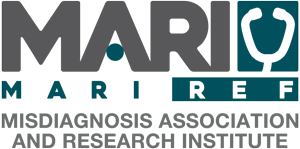Author: Anushka Pradhan
Editor: Heia Mansouri Dana
Overview
Cerebral aneurysms are vascular abnormalities in which a bulge in an artery in or near the brain is formed when the arterial walls are weak (Jersey, 2020). The dilation of the aneurysm may vary in size, ranging from less than 0.5mm to greater than 25mm (Jersey, 2020). Unruptured cerebral aneurysms are often asymptomatic and found incidentally upon neuroimaging or autopsy (Jersey, 2020). On a global scale, the prevalence of cerebral aneurysms is approximately 3.2%. The mean age of patients is 50 years old and there is a 1:1 gender ratio (Jersey, 2020). However, the ratio is approaching 2:1 with increasing female predominance over the age of 50 (Jersey, 2020).
Key Words
Brain Aneurysms, Cerebrum, Seizures, MRI, Arterial Blockage
Etiology
Cerebral aneurysms are caused by multifactorial processes, causing a structural defect in cerebral arterial walls (Czekajło, 2019). The weakening of the wall can result in the breakdown of the internal elastic lamina of the artery (Czekajło, 2019). The “bulge” or arterial remodeling is due to the degradation of collagen and elastin fibres (Czekajło, 2019). Additional evidence suggests that T-cell and macrophage-mediated inflammation is also responsible for histologic changes in the vascular wall (Jersey, 2020).
Symptoms
Unruptured cerebral aneurysms are generally asymptomatic. However, ruptured cerebral aneurysms involve the following clinical presentations:
- Loss of consciousness
- Nausea and vomiting
- Seizures
- Severe headaches
- Stiff neck (Czekajło, 2019)
Risk Factors
Genetics is one of the strongest risk factors of cerebral aneurysms (Jersey, 2020). Additionally, advanced age, hypertension, smoking, alcohol abuse, and atherosclerosis may be contributing factors (Jersey, 2020). Other potential causes involve use of cocaine, tumours, trauma, and certain infections such as endocarditis (Jersey, 2020).
Diagnosis
Clinical Features
Neuroimaging, specifically magnetic resonance imaging (MRI), computerized tomographic angiography (CTA), or conventional angiography can identify the presence, shape, and size of an aneurysm, and further, autopsies may also be employed to aid in diagnosis (Jersey, 2020).
Pathological Features
Conducting a family history is important, as incidences of cerebral aneurysms are strongly intertwined with hereditary factors (Jersey, 2020). Additionally, a medical history can reveal other risk factors such hypertension or smoking (Jersey, 2020).
Treatment Protocol
Pharmacological Treatment Protocol
Currently, there is no non-surgical therapy for cerebral aneurysmal to prevent growth and rupture (AOKI, 2016). However, antihypertensive medication may help control systemic blood pressure and reduce chances of aneurysmal rupture (AOKI, 2016).
Non-Pharmacological Treatment Protocol
Patients with unruptured cerebral aneurysms can be under clinical observation and radiological monitoring (Faluk, 2020). Patients with unruptured cerebral aneurysms could receive endovascular therapy, in which a catheter is used to place coils into the aneurysm to form a blood clot and prevent rupture (Faluk, 2020). This can also be conducted in ruptured aneurysms as means to prevent blood flow entering the aneurysmal area of the arteries (Faluk, 2020). Surgical clipping is a more invasive option in which a clip is placed onto the artery to prevent more blood from entering the aneurysm sac (Faluk, 2020).
Articles on Misdiagnosis
The following article shows two uncommon cases of anterior communicating artery aneurysm rupture with small intracerebral bleeding; the initial diagnosis failed to diagnose the cases, which resulted in missing aneurysmal ruptures:
- Hanuska, J., & J. Klener. (2021). Two similar cases of a misdiagnosed anterior communicating aneurysm rupture. Case Reports on Neurology, 13: 218-224. doi: 10.1159/000514242
The following article shows a case of cerebral aneurysm treated with rapid ventricular pacing:
- Yi, P., & G. Huahua. (2018). A case report on middle cerebral artery aneurysm treated by rapid ventricular pacing A CARE compliant case report. Medicine, 97(48): e13320. doi: 10.1097/MD.0000000000013320.
The following article shows a case of cerebral aneurysm with the presentation of aseptic meningitis:
- Saleem, M.A., & R.L. Macdonald. (2013). Cerebral aneurysm presenting with aseptic meningitis: a case report. Journal of Medical Case Reports, 7: 244. doi: 10.1186/1752-1947-7-244.
References
Aoki, T., & Nozaki, K. (2016). Preemptive medicine for cerebral aneurysms. Neurologia Medico-Chirurgica, 56(9), 552–568.
Czekajło, A. (2019). Role of diet-related factors in cerebral aneurysm formation and rupture. Roczniki Panstwowego Zakladu Higieny, 70(2), 119–126.
Faluk, M., & De Jesus, O. (2020). Saccular Aneurysm. In StatPearls. Treasure Island (FL): StatPearls Publishing.
Jersey, A. M., & Foster, D. M. (2020). Cerebral Aneurysm. In StatPearls. Treasure Island (FL): StatPearls Publishing.
Mayer, P. L., Awad, I. A., Todor, R., Harbaugh, K., Varnavas, G., Lansen, T. A., Dickey, P., Harbaugh, R., & Hopkins, L. N. (1996). Misdiagnosis of symptomatic cerebral aneurysm. Prevalence and correlation with outcome at four institutions. Stroke, 27(9), 1558–1563. DOI: 10.1161/01.str.27.9.1558
